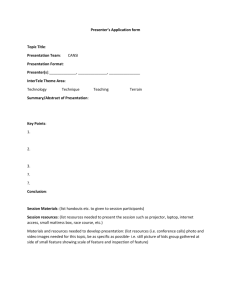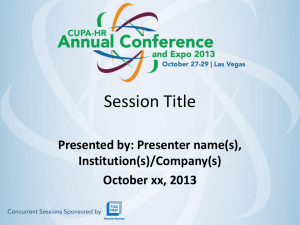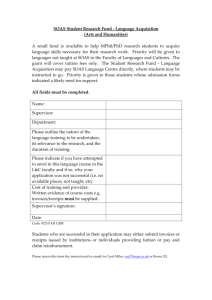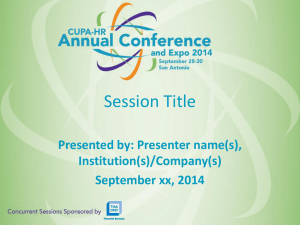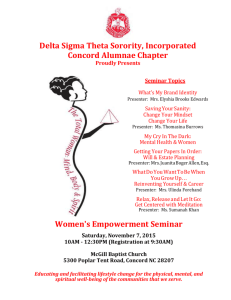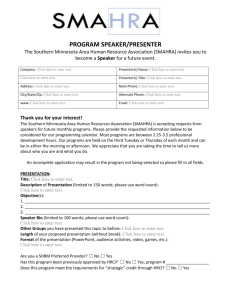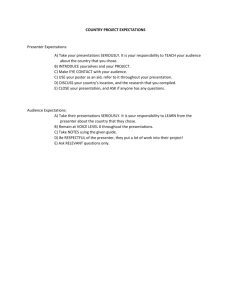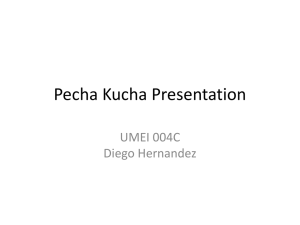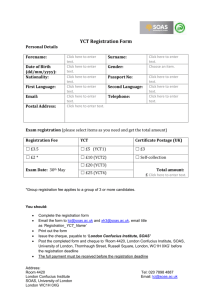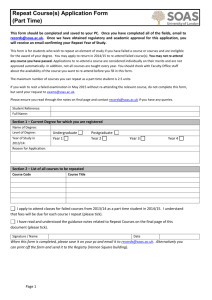Giving a Paper
advertisement
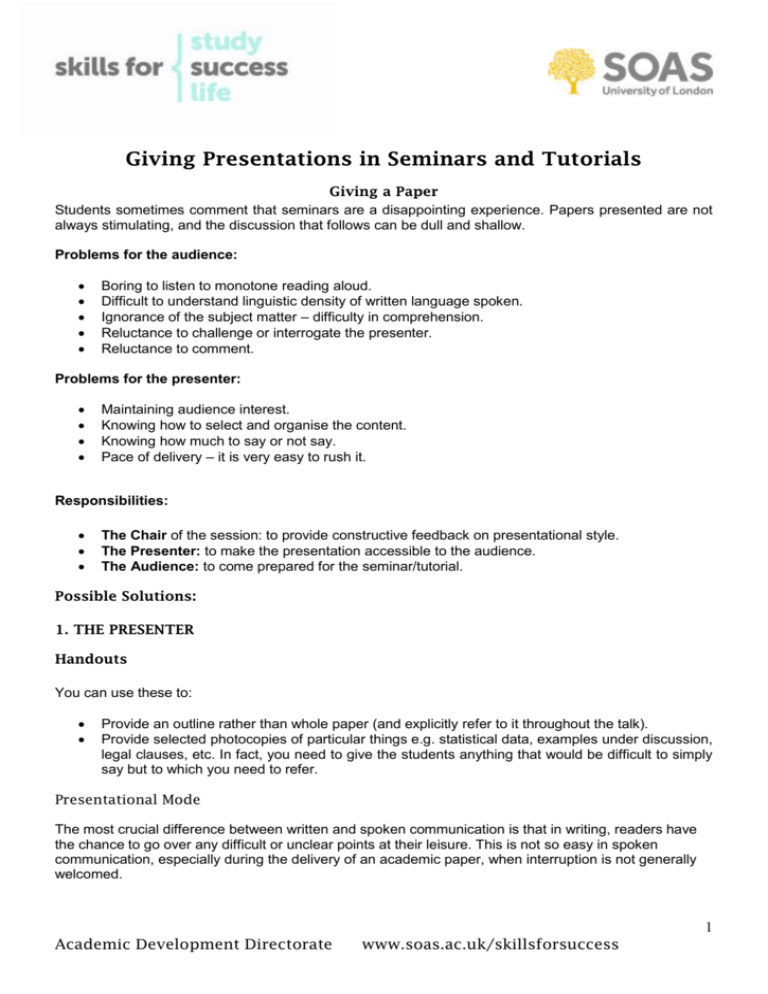
Giving Presentations in Seminars and Tutorials Giving a Paper Students sometimes comment that seminars are a disappointing experience. Papers presented are not always stimulating, and the discussion that follows can be dull and shallow. Problems for the audience: Boring to listen to monotone reading aloud. Difficult to understand linguistic density of written language spoken. Ignorance of the subject matter – difficulty in comprehension. Reluctance to challenge or interrogate the presenter. Reluctance to comment. Problems for the presenter: Maintaining audience interest. Knowing how to select and organise the content. Knowing how much to say or not say. Pace of delivery – it is very easy to rush it. Responsibilities: The Chair of the session: to provide constructive feedback on presentational style. The Presenter: to make the presentation accessible to the audience. The Audience: to come prepared for the seminar/tutorial. Possible Solutions: 1. THE PRESENTER Handouts You can use these to: Provide an outline rather than whole paper (and explicitly refer to it throughout the talk). Provide selected photocopies of particular things e.g. statistical data, examples under discussion, legal clauses, etc. In fact, you need to give the students anything that would be difficult to simply say but to which you need to refer. Presentational Mode The most crucial difference between written and spoken communication is that in writing, readers have the chance to go over any difficult or unclear points at their leisure. This is not so easy in spoken communication, especially during the delivery of an academic paper, when interruption is not generally welcomed. 1 Academic Development Directorate www.soas.ac.uk/skillsforsuccess Consequently, you need to take steps to facilitate comprehension: Provide an internal map stating your intentions, clarifying each sub-intention as you go along; i.e. throughout the talk, tell your audience what you are doing. Reformulate the main ideas to ensure comprehension. Address the audience directly to check that they understand (or are awake!). When referring to the handouts, talk/comment/interpret rather than read. Direct the audience to look at the handouts. Use PowerPoint, OHTs (overhead transparencies), or slides if you prefer. Don’t forget about pronunciation issues – rhythm, word/sentence stress, pace and pitch. These can make a huge difference to the success or failure of a presentation. If you’re reading your essay out to the group, you have to be extra careful to ensure their understanding. Before reading, say exactly what your paper is about (e.g. “This paper looks at Structural Adjustment Policy in sub-Saharan Africa, and examines some of the failures of that approach.”). If you are going to refer to any examples, data or statistics, make sure you have made photocopies or at least an OHT of these so that you can refer to them. Don’t expect the group to understand your written descriptions of them! Using photocopies or OHTs will help your audience understand your presentation much better. Make sure you’ve rehearsed your reading to some extent (word stress, pronunciation, etc.). If you feel that some sections are complex then reformulate them using simpler language/shorter sentences. Look at the audience directly from time to time. Pause for a second or two to give them (and yourself) some breathing space. Reading aloud is quite hard so, if you can, choose a “half reading half speaking” approach. 2. THE AUDIENCE Preparation Read at least some of the suggested materials to get the gist of the topic. Participation Make notes during the presentation and use them to ask questions afterwards. Comment on the evidence supplied, on the arguments presented (whether you agree or disagree), give other examples that strengthen the case, etc. Do not be afraid to ask for clarification if you haven’t understood something. If you haven’t understood, then it is likely that others won’t have either. Feel free to ask questions about meaning, request expansion of an idea or further exemplification. Remember that a seminar is supposed to be a learning experience, an exchange of ideas and a way to improve understanding of the field. It is for your benefit and that of your peers. 2 Academic Development Directorate www.soas.ac.uk/skillsforsuccess Summarising for tutorials A common feature of tutorial sessions is that one or two students are asked to give a short summary/review of a paper or chapter that they have been allocated. This can be quite a difficult task, particularly if the text is long and complex. However, the exercise serves the following purposes: It enables the tutor to know whether you have understood the assigned text(s). It ensures that everyone in the group has more or less the same information. (All students are supposed to be familiar with the topic using references from their bibliographies and/or reading the paper themselves.) It sets the scene for further discussion. It is likely that you will be given a specific task to do relating to the summary. For instance: You may be given a question prior to the tutorial which you are expected to deal with in your interpretation of the paper. You may be asked to compare two or three papers dealing with a similar issue. You may be asked to simply give a brief outline of the main arguments presented in the paper. Stage A: The Text In order to make your task easier or at least more manageable, it is worth considering the following questions: What is the aim of the text? (I.e. Why did the writer write it?) What approach does the writer take (e.g. historical, comparative, etc.)? What are the relevant arguments in the context of your presentation task? What line of argument does the writer take, and is it convincing? What conclusions (if any) does the writer draw? Is there anything else in the text that you feel is worth commenting on (e.g. bias)? These should provide you with the frame for your summary. Stage B: The Audience When you’ve answered these questions, there are some more concerning the oral summary itself. In particular, these relate to how best to communicate the content of the text, and your interpretation of it to your audience. How much does the listener know about the subject? How much do I need to say? Do I need to give an overview of the text? Do I need to provide any background information relating to the text/topic? How much detail should I give? Should I give examples of my own to explain certain points? Should I stick only to what is in the original text? Do I need to provide some kind of introduction to the summary/explanation? Should I refer directly to the original text? How can I conclude? 3 Academic Development Directorate www.soas.ac.uk/skillsforsuccess

